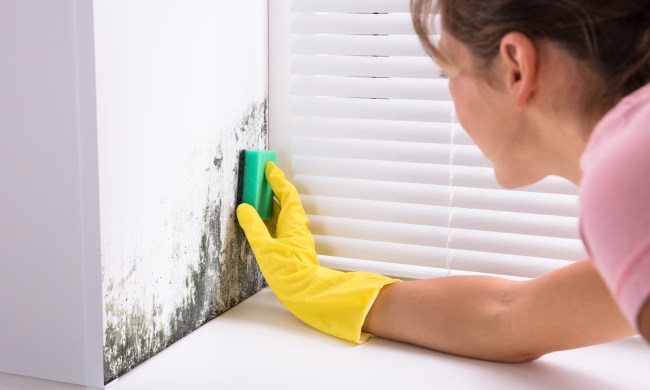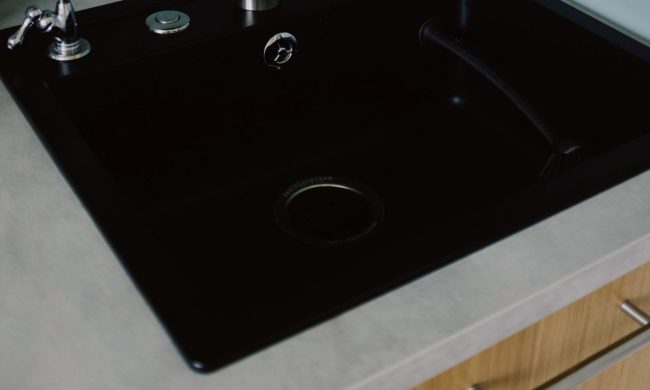Everyone has their regular cleaning routine—the day-to-day chores you do without really thinking about them. But what about the cleaning tasks that may not be as obvious? Some everyday items get dirty in a less obvious way, but they still need cleaning and care to keep them running properly and safely.
From kitchen essentials to items for your children or pets, you’re probably not cleaning these items nearly as often as you should!
 What should I be cleaning more often in my kitchen?
What should I be cleaning more often in my kitchen?
Toaster
A build-up of crumbs can cause your toaster not to function properly or even lead to a kitchen fire! That’s why it’s important to make sure you clean the inside of your toaster, as well as the outside.
Start by flipping over the toaster to shake out the crumbs. If your toaster has a crumb tray, slide it out and place it inside a sink filled with water and a few drops of dishwashing liquid (a sponge can help loosen any stuck-on particles). Use a pastry brush to remove crumbs from inside the toaster, working from top to bottom. Finally, clean the outside of the toaster by wiping it down with a damp cloth or all-purpose spray cleaner.
Dishwasher
One of the reasons your dishwasher gets overlooked for cleaning is that we sometimes forget that even items made to clean other things also need to be cleaned themselves. But they do—about once a month, in fact. Luckily, cleaning your dishwasher is very simple and requires almost no elbow grease.
After taking out the inside racks, remove the filter at the base of the machine and clean it using liquid dish detergent and a sponge. Rinse the filter and place it back inside the dishwasher, along with the racks.
Next, fill a dishwasher-safe cup with distilled white vinegar and place it upright in the top rack of the dishwasher. Run the dishwasher empty (other than the white vinegar cup) to clean and deodorize the inside of your machine.
Coffee maker
Hard water mineral build-up inside your coffee maker can not only affect its performance but can also change the way your coffee tastes. If the thought of bad-tasting brew is giving you the shakes, you can help avert a caffeine catastrophe by deep cleaning your coffee maker once a month.
Fill the water reserve, using equal parts water and distilled white vinegar, and set the machine to brew. Pause halfway through the brewing cycle, allowing the vinegar solution to sit for 30 minutes. Finish brewing and then wash the coffee carafe.
Garbage disposal
With all of the food scraps that go inside, it’s easy to see why your garbage disposal needs regular cleaning. In fact, according to the Today Show, you should be cleaning your garbage disposal once a week.
With both the disposal and faucet turned off, add six ice cubes, along with one tablespoon of baking soda, a few lemon slices, and a teaspoon of bleach, followed by another six ice cubes.
Without running the water, turn the disposal on until the grinding sound stops and then flush with cold water for about 30 seconds.
Microwave
The best way to clean your microwave is also the simplest—and it doesn’t include any harsh, toxic chemicals or intense scrubbing.
- Add two cups of water to a microwave-safe bowl. Cut a lemon in half, squeeze the juice into the bowl, and then drop both halves into the water.
- Run the microwave at high for 10 minutes.
- Let the bowl cool before removing it.
- Use a wet sponge to wipe away grease, food particles, and spills from the walls, ceiling, and inside the microwave door.
- Put the revolving microwave dish into the dishwasher and wash with your next load.
Refrigerator
Your refrigerator has the potential to become a real mess—with food spills, forgotten produce spoiling in bottom drawers, and leaky ketchup bottles oozing onto door shelves; every homeowner needs to clean their refrigerator regularly. While it may seem like a daunting task, you can do a monthly clean-out quite easily by following these simple steps.
- Take all of the food out of your refrigerator and freezer, check expiration dates, and throw away any spoiled foods.
- Remove all shelves and drawers and wash them in the sink using warm, soapy water and a sponge. Leave them out to air dry on a towel.
- While you’re waiting for the shelves and drawers to dry, you can wipe down the interior of the refrigerator using soapy water and a sponge or a fragrance-free all-purpose cleaner (harsh-smelling chemicals could permeate into foods).
- Dry inside the refrigerator using a kitchen towel before replacing the clean shelves and drawers.
 How often to clean kids toys and other items around the house
How often to clean kids toys and other items around the house
Kids’ toys
Unless your child has recently been sick, the toy is excessively used, or it’s been in a very dirty location, it’s recommended that toys get cleaned about once a month.
Stuffed toys can usually be machine washed, bath toys and other soft plastics can go in the top rack of the dishwasher.
To disinfect hard toys:
- Wash off dirt and grime with soap and water.
- Place the toys inside a mesh bag.
- Fill a basin with a gallon of water and a half cup of bleach.
- Soak for five minutes, remove and hang the bag to dry.
Pet bowls
You want the best for your beloved pet, and that means making sure the bowls they eat and drink from are clean and free of bacteria. According to doctors for the Center for Veterinary Medicine at the FDA, pet food bowls should be washed every day with hot water and dish soap, while water bowls should be given the same type of cleaning every other day.
Blinds
Your blinds are a magnet for dust, and if you don’t factor regular cleanings into your schedule, they’ll be filthy in no time. If you dust blinds and wipe them down monthly, you’ll avoid the need to do a deep cleaning that requires removal of the blinds.
Simply lower the blinds down as far as they can go, and close the slats into the downward position. Using a microfiber cloth, dust the blinds, then switch the slats to the ‘up’ position and repeat. Follow the same process, this time with a damp rag soaked in soapy water, and you’re done!
Bath mats
They get wet and dry and wet again so many times; your bath mat can become a breeding ground for mold and mildew. Experts recommend washing your bath mat once a week, but luckily you can pop them into the washing machine, and many can also be machine dried. If your bath mat has a rubber non-skid backing, it should be air-dried to avoid causing damage to the rug.
Air conditioning filters
To keep your air conditioner unit operational and help maintain air quality, it’s vital to keep the filter clean. For optimal performance, you should change your air filters once a month, in addition to regular servicing by a professional twice a year. You can vacuum the AC coils and small filters between servicing to remove dust accumulation on the AC unit.
Our tips and easy-to-follow instructions will help you establish a regular cleaning schedule that will keep your home cleaner and safer than ever before.
 What should I be cleaning more often in my kitchen?
What should I be cleaning more often in my kitchen? How often to clean kids toys and other items around the house
How often to clean kids toys and other items around the house


